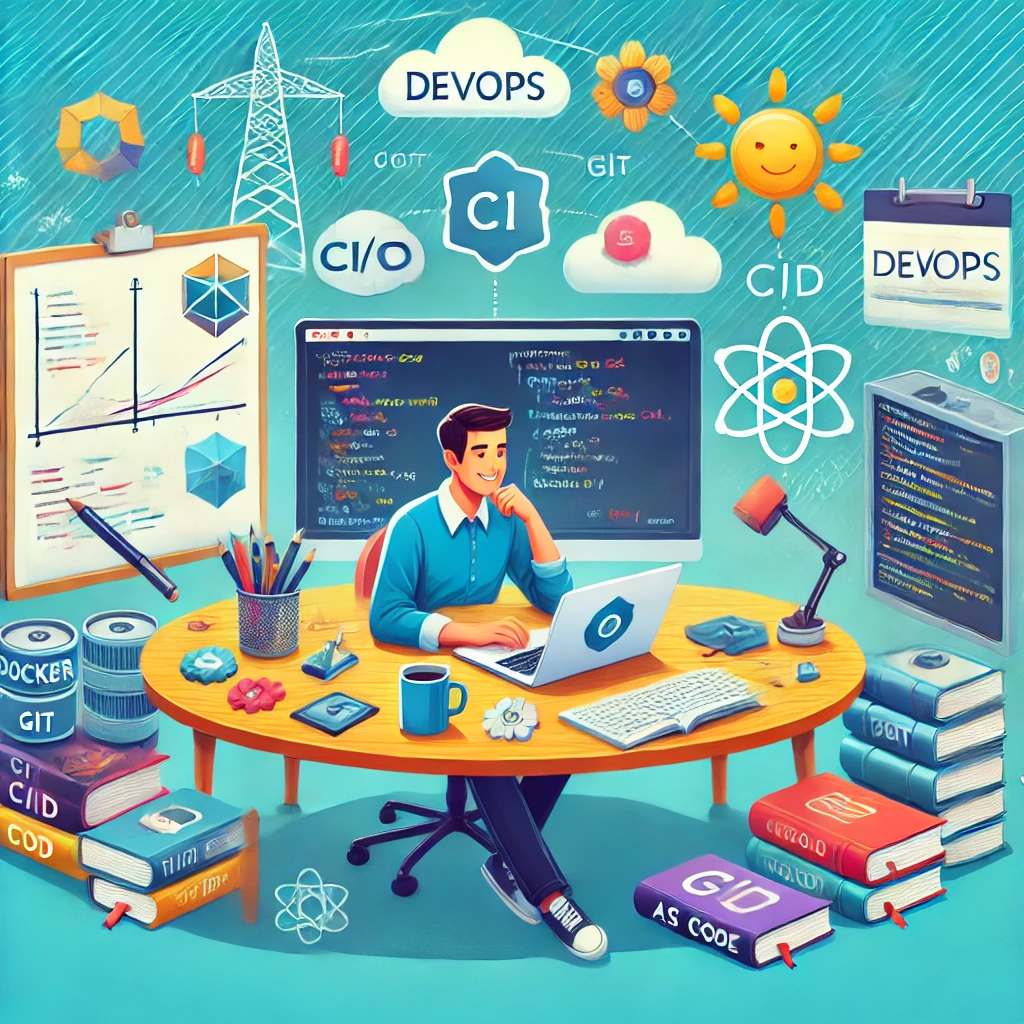Laying the Foundation: My First Steps into the World of DevOps
 Sakshi K
Sakshi K
Introduction
Embarking on the DevOps journey can be overwhelming, but it's also incredibly rewarding. When I first started, I wasn't sure which tools or concepts to tackle first. Over time, I found a roadmap that helped me build a solid foundation in DevOps. Here's what I've learned along the way, and what I recommend for anyone new to this field.
As a fresher stepping into the tech world, I’ve been navigating the exciting yet overwhelming field of DevOps. With the demand for skilled DevOps professionals on the rise, I knew I wanted to equip myself with the right skills. Here’s a roadmap of what I’ve learned so far on my journey from zero to DevOps, and where I’m still growing.
Understanding the Basics of DevOps
To start, I had to grasp the foundational concepts of DevOps. I learned that DevOps is more than just a set of tools; it’s a cultural shift promoting collaboration between development and operations teams. Understanding the importance of Continuous Integration (CI) and Continuous Delivery (CD) was crucial, as they enhance the software development and deployment processes. I also familiarized myself with Agile methodologies, which prioritize flexibility and customer feedback.
Step 1: Mastering Version Control Systems
I dove into Git and GitHub, which have become essential tools in my learning journey.
Learning Git: I started with the basics of Git, mastering commands like
clone,commit,push, andpull. Understanding branching strategies has helped me collaborate effectively on projects.Exploring GitHub: Creating a GitHub account opened up a world of possibilities. I learned about repositories, pull requests, and issues, which are vital for collaboration in the DevOps ecosystem.
Step 2: Embracing Continuous Integration (CI)
I then focused on CI tools to automate my testing processes.
Understanding CI: I realized how crucial automated testing is in ensuring code quality.
Getting Hands-On: I explored CI tools like Jenkins and GitHub Actions, creating a simple CI pipeline for one of my projects, which greatly improved my workflow.
Step 3: Diving into Containerization
Docker has been a game-changer for me in understanding containerization.
Learning Docker Basics: I discovered the difference between containers and virtual machines and started using basic Docker commands to build and run containers.
Creating Docker files: Writing Docker files and managing multi-container applications with Docker Compose has helped me appreciate the power of containerization.
Step 4: Configuring Infrastructure as Code (IaC)
I ventured into Infrastructure as Code (IaC) with Terraform.
Getting Started with IaC: I learned how IaC automates infrastructure management, making deployments faster and more reliable.
Mastering Terraform: Writing simple Terraform scripts has allowed me to create and manage cloud resources, reinforcing my understanding of cloud infrastructure.
Step 5: Automating Deployment with Continuous Delivery (CD)
With a solid grasp on CI, I turned my attention to Continuous Delivery (CD).
Understanding CD: I learned how CD builds on CI, enabling automated deployment to production environments.
Exploring Deployment Tools: I got hands-on with tools like Jenkins and GitLab CI/CD, learning to deploy applications seamlessly.
Step 6: Monitoring and Logging Applications
I recognized the importance of monitoring and logging in maintaining application health.
Learning Monitoring Tools: I explored tools like Prometheus and Grafana to monitor application performance and gather metrics.
Understanding Logging: Familiarizing myself with the ELK Stack for effective log management has enhanced my ability to troubleshoot issues.
Step 7: Getting Comfortable with Cloud Services
Understanding cloud services has been a vital step in my learning journey.
Learning Cloud Basics: I grasped core concepts of cloud computing, including various models like IaaS, PaaS, and SaaS.
Familiarizing with Providers: Choosing a cloud provider like AWS, I learned how to deploy applications using their services, which expanded my practical knowledge.
Continuing the Journey: What’s Next?
While I have made great strides in my learning journey, I acknowledge that I am still growing. I am eager to explore the remaining steps, including security in DevOps (DevSecOps), advanced container orchestration with Kubernetes, and more.
I plan to delve deeper into these topics and build real-world projects that showcase my skills.
Conclusion: Keep Learning!
As I continue my DevOps journey, I’ve come to understand that continuous learning is key. I follow blogs, engage in forums, and actively participate in the DevOps community to stay updated on the latest trends and technologies. Documenting my learning journey and sharing my progress not only inspires others but also helps me reflect on my growth.
I’ll be sharing more about my DevOps projects, so keep an eye out for future posts. If you’re on the same journey, let’s connect and share insights!
Subscribe to my newsletter
Read articles from Sakshi K directly inside your inbox. Subscribe to the newsletter, and don't miss out.
Written by

Sakshi K
Sakshi K
Hi there, tech innovators! 👋 I'm an enthusiastic Cloud and DevOps Engineer, excited to explore scalable solutions in the tech world. As a fresher, I'm continuously growing my expertise in containerization technologies like Docker and Kubernetes, where I enjoy creating dynamic and efficient environments. 🌍🐳 I’ve completed a Udemy certification in Learn DevOps: Docker, Kubernetes, Terraform, and Azure DevOps, which has enhanced my skills in CI/CD pipeline development with tools like Jenkins and GitHub Actions. Let’s connect and grow together on this exciting journey! 🌟